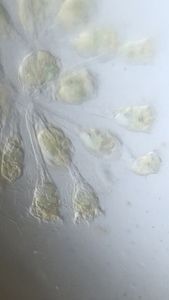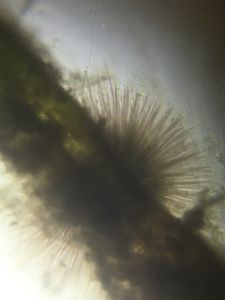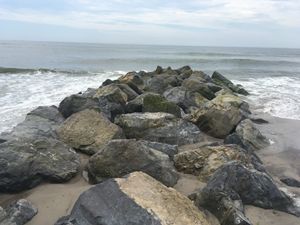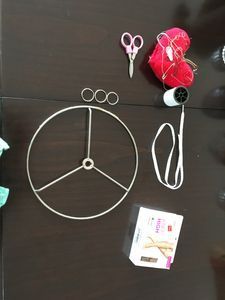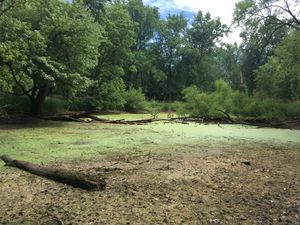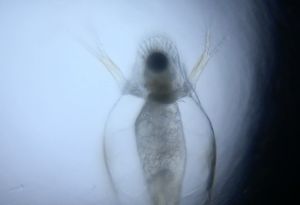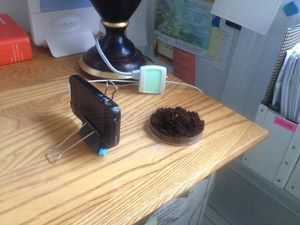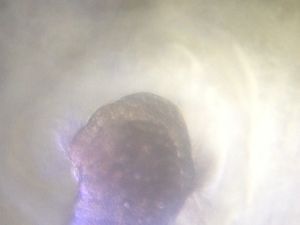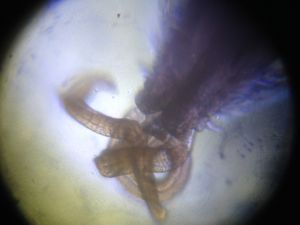The Itch Part Two: Puce
 Oct 15, 2015 • 12:25 PM UTC
Oct 15, 2015 • 12:25 PM UTC United States
United States 140x Magnification
140x Magnification Unknown
Unknown
Matthew Rossi
I'm a novelist, essayist, and a writing consultant. I work in the writing centers at Columbia and Baruch University and explore research into the overlap of maker cultures and writing. My work with the Foldscope tends to focus on finding wild creatures in urban spaces and looking at how human works are shaped by the movements of the biosphere.
40posts
105comments
4locations
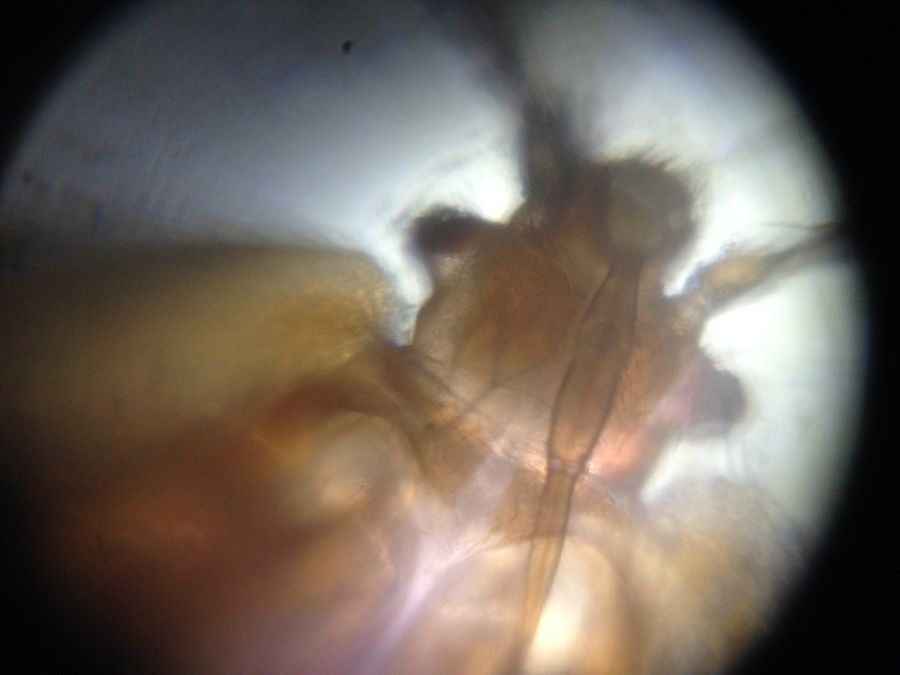
Entymologists observe that the color puce is named for the flea, whose Latin name, pulicem carries some vestiges of the coloration within its syllables. Defined as the color of a flea’s feces, or of its body when crushed against a white sheet, puce is the color of blood when it has been processed and expelled by the gut of an insect. It is a grand expression of the collision of the insect world and the human.
I wonder, then, what color comes from the belly of the bed bug. Is it puce, or is it something else? Following their taxonomy, perhaps the color is cimice.
I wonder, then, what color comes from the belly of the bed bug. Is it puce, or is it something else? Following their taxonomy, perhaps the color is cimice.
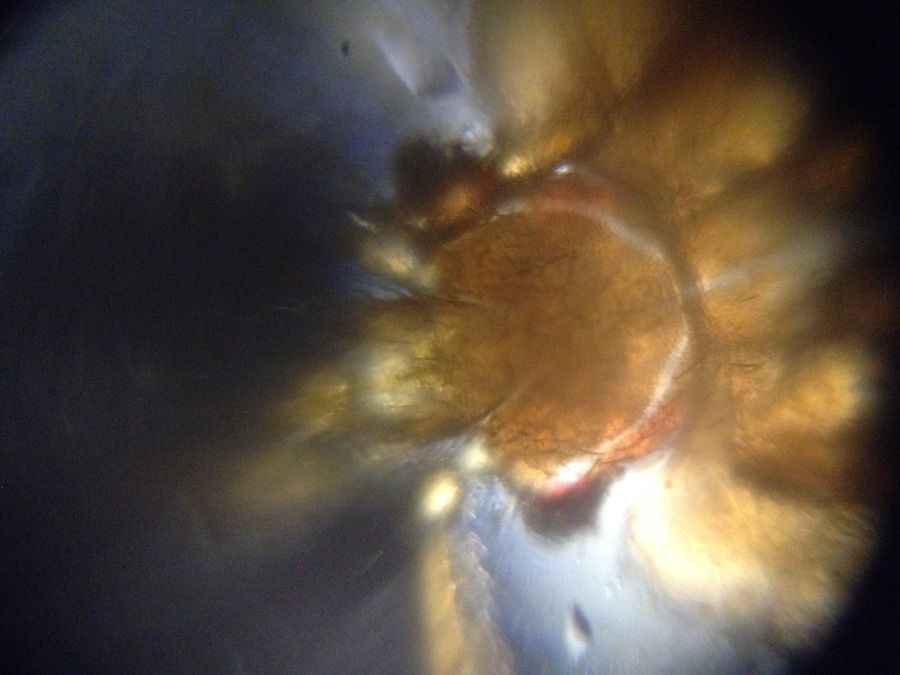
If it is possible for any creature in the mapped and grid-etched and nightly lit world of the City of New York to occupy a demonic position, that territory belongs to the bed bug. In apartments in New York, the legends around them are numerous. That they are invisible to the eye. That they can be frozen for months in a block of ice, and then thaw and eat again. That they live in every scrap of furniture, every book and bookshelf, every object of human creation seen on the streets. They can go for months without food; they can reproduce by the hundreds in that time. Nobody is safe from the bed bug. When they infest, they conquer.
Imagine the surreal moment when I woke the other day, attended to my morning face washing, and discovered what appeared to be a bed bug sitting in my bathroom sink. We are not infested, my partner and me. We have nobody biting us, no evidence of them in our place, but this was a flat bug, a dark bug, the size of an apple seed. She was trying to get out of our sink. She was definitely a she. With all the implication of eggs and others that carries.
I have met bedbugs once before, when I spent a night in a budget hostel and didn’t heed warnings of bugs present. The impact that this had on my psyche, the knowledge that I had been food while I slept, was, from my disinfected cultural point of view, dramatic. I know more about how to recognize a bed bug than any other creature. I can recognize one faster than my cat. This one, I took out of the sink, scarcely believing what I saw. I perched her on my finger and carried her into the light. Her body as thin as a sheet of paper. She paused on my finger; it took me a second to realize what was happening, why she wasn’t moving, but when I did, I was in awe. She was feeding.
Imagine the surreal moment when I woke the other day, attended to my morning face washing, and discovered what appeared to be a bed bug sitting in my bathroom sink. We are not infested, my partner and me. We have nobody biting us, no evidence of them in our place, but this was a flat bug, a dark bug, the size of an apple seed. She was trying to get out of our sink. She was definitely a she. With all the implication of eggs and others that carries.
I have met bedbugs once before, when I spent a night in a budget hostel and didn’t heed warnings of bugs present. The impact that this had on my psyche, the knowledge that I had been food while I slept, was, from my disinfected cultural point of view, dramatic. I know more about how to recognize a bed bug than any other creature. I can recognize one faster than my cat. This one, I took out of the sink, scarcely believing what I saw. I perched her on my finger and carried her into the light. Her body as thin as a sheet of paper. She paused on my finger; it took me a second to realize what was happening, why she wasn’t moving, but when I did, I was in awe. She was feeding.
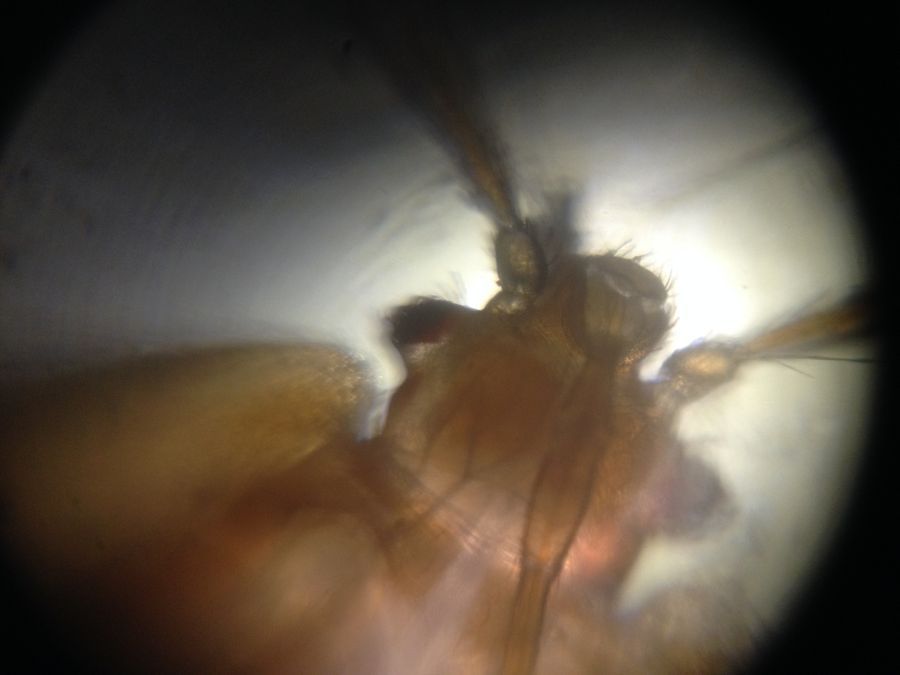
Her body turned in moments from deep brown to a bright, thin red. I watched for a minute or so before I thought of how my finger would itch when she was done, how much I wanted to mitigate the pain of that bite by stopping her feeding early. A difference between the bed bug bite and the mosquito is that the bed bug lingers, it burns. Where mosquitoes provide immediate, momentary discomfort (and of course, disease vectors), bed bugs create a slow burn, a painful itch that develops over many days (as I type this, my left pointer finger hurts…which is annoying when you’re left-handed).
I confess there is a very particular mindset expressed in the moment when, watching a bug feed on my finger, I thought “Oh man, I need to get some images of this!” A bed bug feeding on me; a microscope very well attuned to looking at creatures like her. I knocked her off of my finger onto a slide, and after some negotiation, wedged her under a slip cover, held in place with some vaseline lip care. A bed bug’s body is remarkably able to thin itself out, so it was no trouble fitting her under the slip cover.
I confess there is a very particular mindset expressed in the moment when, watching a bug feed on my finger, I thought “Oh man, I need to get some images of this!” A bed bug feeding on me; a microscope very well attuned to looking at creatures like her. I knocked her off of my finger onto a slide, and after some negotiation, wedged her under a slip cover, held in place with some vaseline lip care. A bed bug’s body is remarkably able to thin itself out, so it was no trouble fitting her under the slip cover.
In her body, through the thin distortion of her carapace, you can see my blood, shining red and spreading through her. Also interesting is the presence of air bubbles, something I’ve seen before in the bellies of insects. Without my blood in her, she cannot make eggs, and cannot make others of herself. I digest and I become bed bug, so that some of her young are me; I am them. Transmuted like Gregor Samsa into the body of a thin, rounded bug. Left behind is puce.
Interestingly, the most expedient and least chemically problematic way to kill an infestation of bed bugs is, itself, a subject worthy of the microscope.
Diatomaceous earth. The tiny glass skeletons of millions of single-celled algae that act as fortresses for them against an onslaught of viruses.
Interestingly, the most expedient and least chemically problematic way to kill an infestation of bed bugs is, itself, a subject worthy of the microscope.
Diatomaceous earth. The tiny glass skeletons of millions of single-celled algae that act as fortresses for them against an onslaught of viruses.

Even viewed under a high mag lens, the sample doesn’t look like much more than a few sparkling motes of dust. Though you can see some forms, a square rod here, a sphere there, hinting that they are constructed, rather than eroded objects. To the bodies of tiny arthropods, a layer of diatomaceous earth spread across a bed is like a desert of glass shards to crawl across.
It is interesting to think that these skeletons built to support and aid the lives of tiny plants are now acting as my protectors. I think of the ways ancient people had to keep out and kill the demons they believed wanted into their world. Among these was the laying down of an unbroken line of salt across the threshold of a doorway. No doubt ancient people were observant enough to see how salt drained life from slugs and other creatures, and from this concluded it was a powerful force for stopping other forces. If the bed bug is the demon of the modern city, a silent stalker coming in the night to drain us, then the laying down of diatoms amounts to a kind of exorcism, a weaponization of one kind of life to fight against another.
It is interesting to think that these skeletons built to support and aid the lives of tiny plants are now acting as my protectors. I think of the ways ancient people had to keep out and kill the demons they believed wanted into their world. Among these was the laying down of an unbroken line of salt across the threshold of a doorway. No doubt ancient people were observant enough to see how salt drained life from slugs and other creatures, and from this concluded it was a powerful force for stopping other forces. If the bed bug is the demon of the modern city, a silent stalker coming in the night to drain us, then the laying down of diatoms amounts to a kind of exorcism, a weaponization of one kind of life to fight against another.
Sign in to commentNobody has commented yet... Share your thoughts with the author and start the discussion!
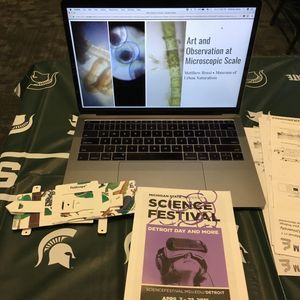
 0 Applause
0 Applause 0 Comments
0 Comments




